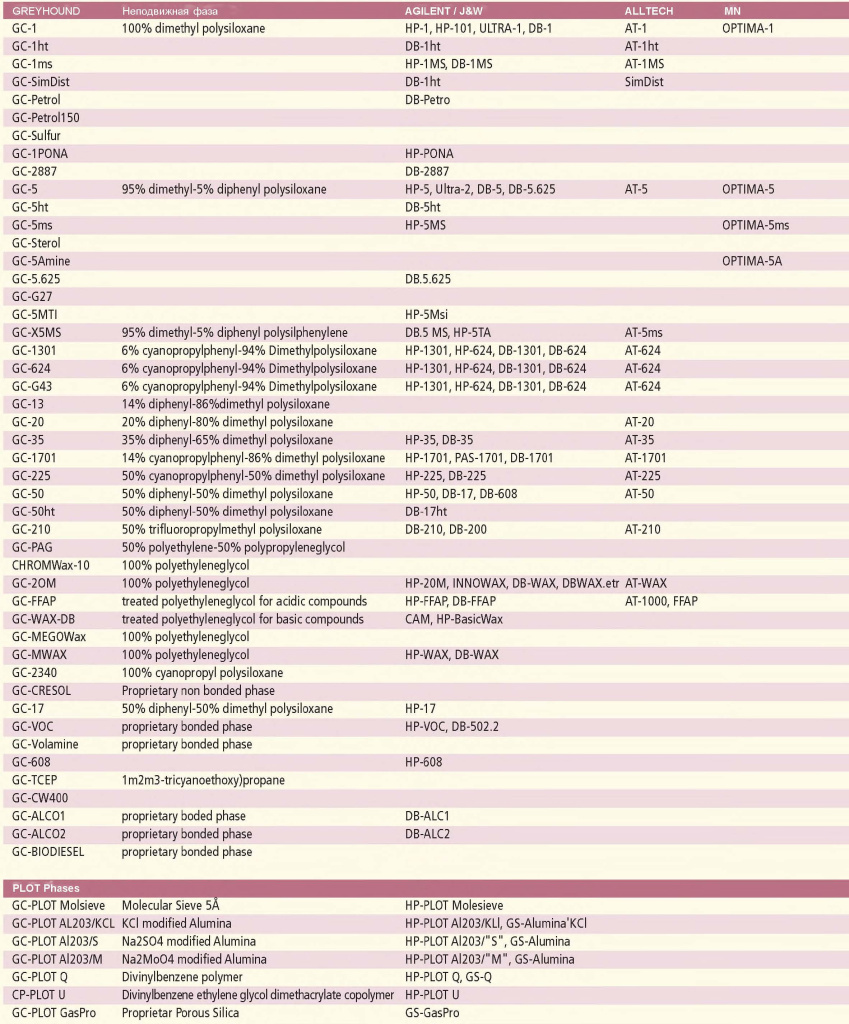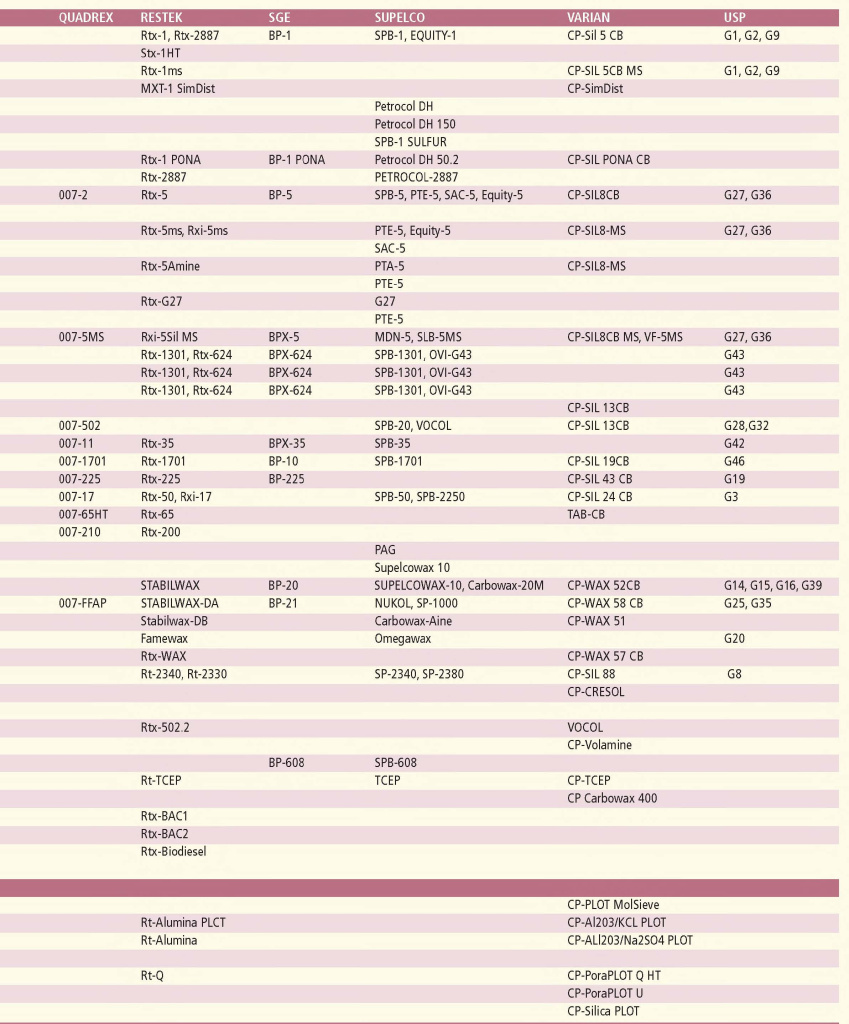Capillary columns for gas chromatography Q-Cap by Greyhound
Capillary columns for gas chromatography Q-Cap by Greyhound
Our extensive range of capillary columns are designed and manufactured to the most exacting andrigorous standards. Materials of the highest quality and attention to every detail of the manufacturingprocess, results in columns which ensure excellent and reproducible performance for even the mostdifficult types of samples.
Our extensive range of capillary columns are designed and manufactured to the most exacting andrigorous standards. Materials of the highest quality and attention to every detail of the manufacturingprocess, results in columns which ensure excellent and reproducible performance for even the mostdifficult types of samples.
MAKE AN ORDER
Download catalog
description
specifications
Scope of application
features and quality
Capillary columns for gas chromatography Q-Cap by Greyhound
Our extensive range of capillary columns are designed and manufactured to the most exacting and rigorous standards. Materials of the highest quality and attention to every detail of the manufacturing process, results in columns which ensure excellent and reproducible performance for even the most difficult types of samples.
Every stage of the manufacturing process, from the inertness of the highest quality fused silica tubing, the phase coating efficiency, film thickness, selectivity and low bleed characteristics of every column are all rigidly monitored. This attention to every details of the manufacturing process means you can be sure the column you purchase today will give you the same precise results as the one you purchased last year or will purchase next year.
Our extensive range of capillary columns are designed and manufactured to the most exacting and rigorous standards. Materials of the highest quality and attention to every detail of the manufacturing process, results in columns which ensure excellent and reproducible performance for even the most difficult types of samples.
Every stage of the manufacturing process, from the inertness of the highest quality fused silica tubing, the phase coating efficiency, film thickness, selectivity and low bleed characteristics of every column are all rigidly monitored. This attention to every details of the manufacturing process means you can be sure the column you purchase today will give you the same precise results as the one you purchased last year or will purchase next year.
Greyhound Q-Cap STATIONARY PHASE CROSS REFERENCE GUIDE




Gas chromatography
- Highest Quality Column Specifications
All Q-Cap capillary columns are manufactured under strict ISO 9001:2000 certified quality procedures, thus ensuring consistent reproducibility column after column. Every Q-Cap capillary column is individually tested to meet the most demanding performance standards, the results of which are detailed in the columns test report and installation guide.
- Low Bleed
The bleed level of a column is a measure of its stability. It is directly related to the amount of stationary phase in the column and thus the film thickness. It also increases exponentially with temperature. Greyhound Chromatography Q-Cap low bleed columns have longer column lives and enable analysts to work with the latest high sensitivity detectors resulting in less instrument maintenance whilst ensuring quantification of high boiling point and high molecular weight compounds which are analysed by means of high temperature gradients.
- Efficiency
Column efficiency is a measure of its separating power. Narrow bore columns, which have a high number of plates per meter have higher separation powers.
This results in better resolution between two peaks or can reduce analysis time. Q-Cap capillary columns are available in diameters from 0.1mm to 0.53mmID.
- Inertness
The columns inertness will influence the elution and recovery of active (polar) compounds. Peak shape for more acid-base compounds improves the closer the value is to 1.0, resulting in greater quantification of peaks and more accurate and reliable results
- Column-to-Column Reproducibility
The selectivity of a column is measured by its Retention Index (RI) and indicates the elution order of the compounds being analysed. The precision manufacturing processes of all Q-Cap capillary columns ensures that the RI between them is as low as possible resulting in excellent column-to-column reproducibility.
- Phase Ratio
A measure of the analytes retention time which varies according to the film thickness of the phase on the column. Columns with a small variance in phase ratio have better column to column retention time reproducibility.
- Maximum Operating Temperature
The MAOT (Maximum Allowable Operating Temperature) of a stationary phase is the temperature at which it will continue to function optimally. MAOT details are listed against each column in the catalogue. Thick film coatings have a lower MAOT because they bleed more at higher temperatures. For temperature programmed analysis, the MAOT is usually 20-25°C. higher than for isothermal operation.
All Q-Cap capillary columns are manufactured under strict ISO 9001:2000 certified quality procedures, thus ensuring consistent reproducibility column after column. Every Q-Cap capillary column is individually tested to meet the most demanding performance standards, the results of which are detailed in the columns test report and installation guide.
- Low Bleed
The bleed level of a column is a measure of its stability. It is directly related to the amount of stationary phase in the column and thus the film thickness. It also increases exponentially with temperature. Greyhound Chromatography Q-Cap low bleed columns have longer column lives and enable analysts to work with the latest high sensitivity detectors resulting in less instrument maintenance whilst ensuring quantification of high boiling point and high molecular weight compounds which are analysed by means of high temperature gradients.
- Efficiency
Column efficiency is a measure of its separating power. Narrow bore columns, which have a high number of plates per meter have higher separation powers.
This results in better resolution between two peaks or can reduce analysis time. Q-Cap capillary columns are available in diameters from 0.1mm to 0.53mmID.
- Inertness
The columns inertness will influence the elution and recovery of active (polar) compounds. Peak shape for more acid-base compounds improves the closer the value is to 1.0, resulting in greater quantification of peaks and more accurate and reliable results
- Column-to-Column Reproducibility
The selectivity of a column is measured by its Retention Index (RI) and indicates the elution order of the compounds being analysed. The precision manufacturing processes of all Q-Cap capillary columns ensures that the RI between them is as low as possible resulting in excellent column-to-column reproducibility.
- Phase Ratio
A measure of the analytes retention time which varies according to the film thickness of the phase on the column. Columns with a small variance in phase ratio have better column to column retention time reproducibility.
- Maximum Operating Temperature
The MAOT (Maximum Allowable Operating Temperature) of a stationary phase is the temperature at which it will continue to function optimally. MAOT details are listed against each column in the catalogue. Thick film coatings have a lower MAOT because they bleed more at higher temperatures. For temperature programmed analysis, the MAOT is usually 20-25°C. higher than for isothermal operation.


